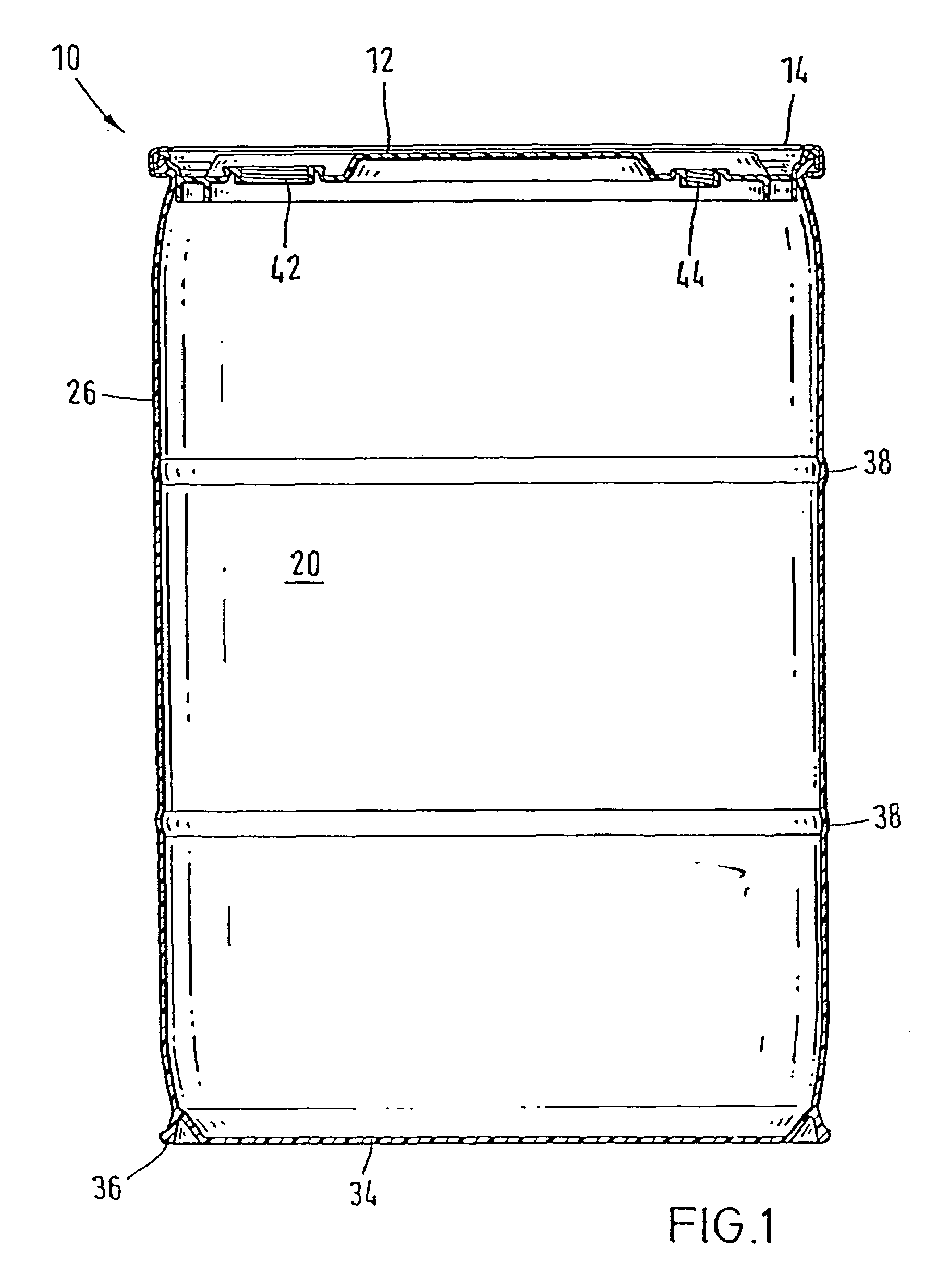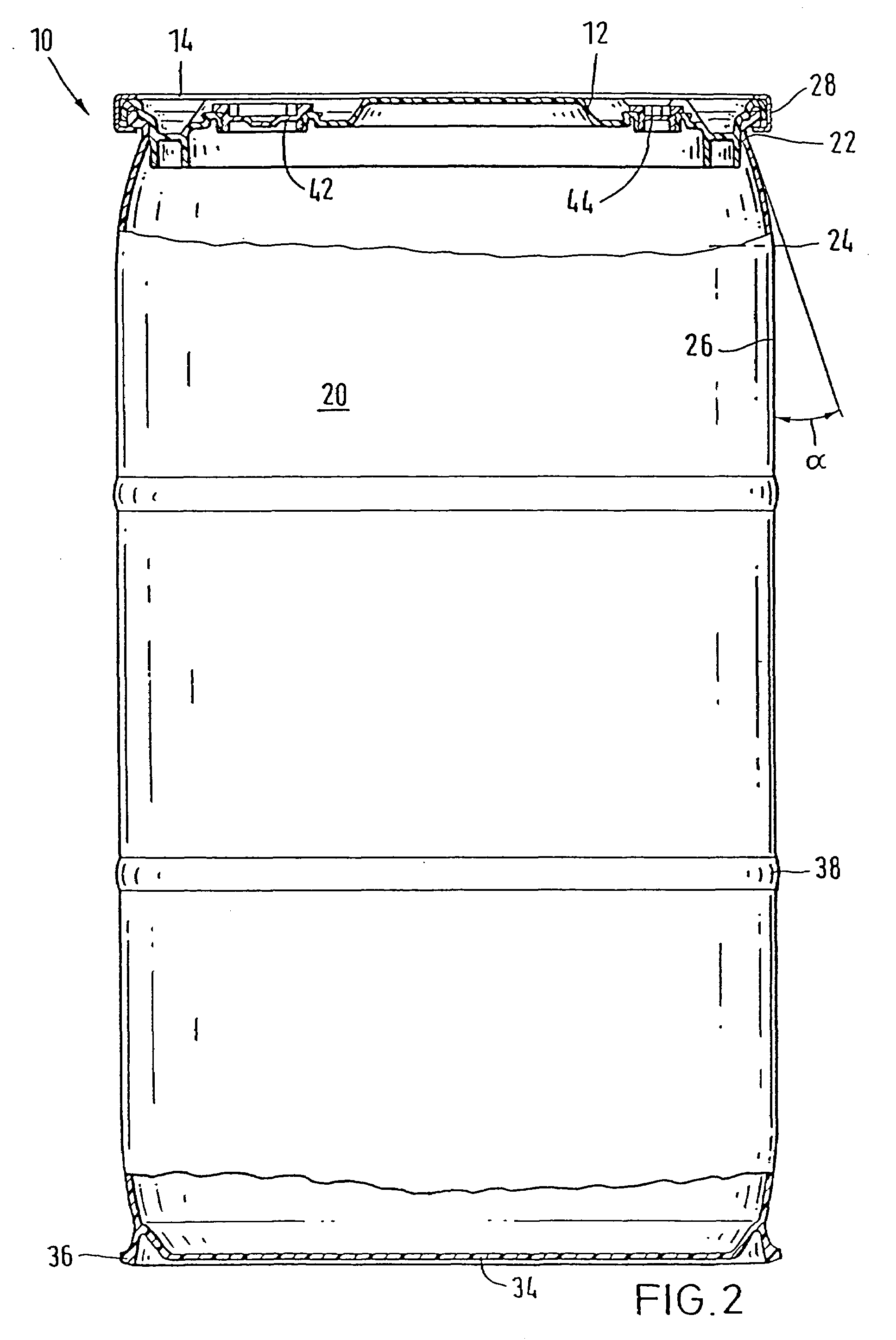Lidded barrel
a lidded barrel and cylindrical technology, applied in cans/barrels/drums, packaging, transportation and packaging, etc., can solve the problems of not being able to completely detach the barrel lid, the barrel is not readily suited for liquid use, and the lid is easily leaking, etc., to achieve simple and efficient, without space loss
- Summary
- Abstract
- Description
- Claims
- Application Information
AI Technical Summary
Benefits of technology
Problems solved by technology
Method used
Image
Examples
Embodiment Construction
[0048]In FIG. 1, a lidded barrel with a capacity of 55 US gallons here, according to the invention, which is provided with a barrel lid 12 put on and a tension-ring closure 14 in place, is referred to by reference number 10. About 80% of barrel body 20 is designed as fully cylindrical, while about 10% respectively of the barrel height upward toward barrel opening edge 28 and downward toward barrel bottom 34 is drawn in with a slight conical taper. In fully cylindrical part 26 of barrel body 20, two comparatively broad rounded barrel body roller cages 38 are arranged at one-third and two-thirds of the barrel height. In the conically tapered transition area between fully cylindrical part 26 of barrel body 20 and flat barrel bottom 34, a solid bottom roller cage 36 that ends flush with barrel bottom 34 is provided. Bottom roller cage 36 has a trapezoidal cross section below with a thinner bridge connection to barrel body 20 and an outside diameter that is almost identical to that of te...
PUM
 Login to View More
Login to View More Abstract
Description
Claims
Application Information
 Login to View More
Login to View More - R&D
- Intellectual Property
- Life Sciences
- Materials
- Tech Scout
- Unparalleled Data Quality
- Higher Quality Content
- 60% Fewer Hallucinations
Browse by: Latest US Patents, China's latest patents, Technical Efficacy Thesaurus, Application Domain, Technology Topic, Popular Technical Reports.
© 2025 PatSnap. All rights reserved.Legal|Privacy policy|Modern Slavery Act Transparency Statement|Sitemap|About US| Contact US: help@patsnap.com



